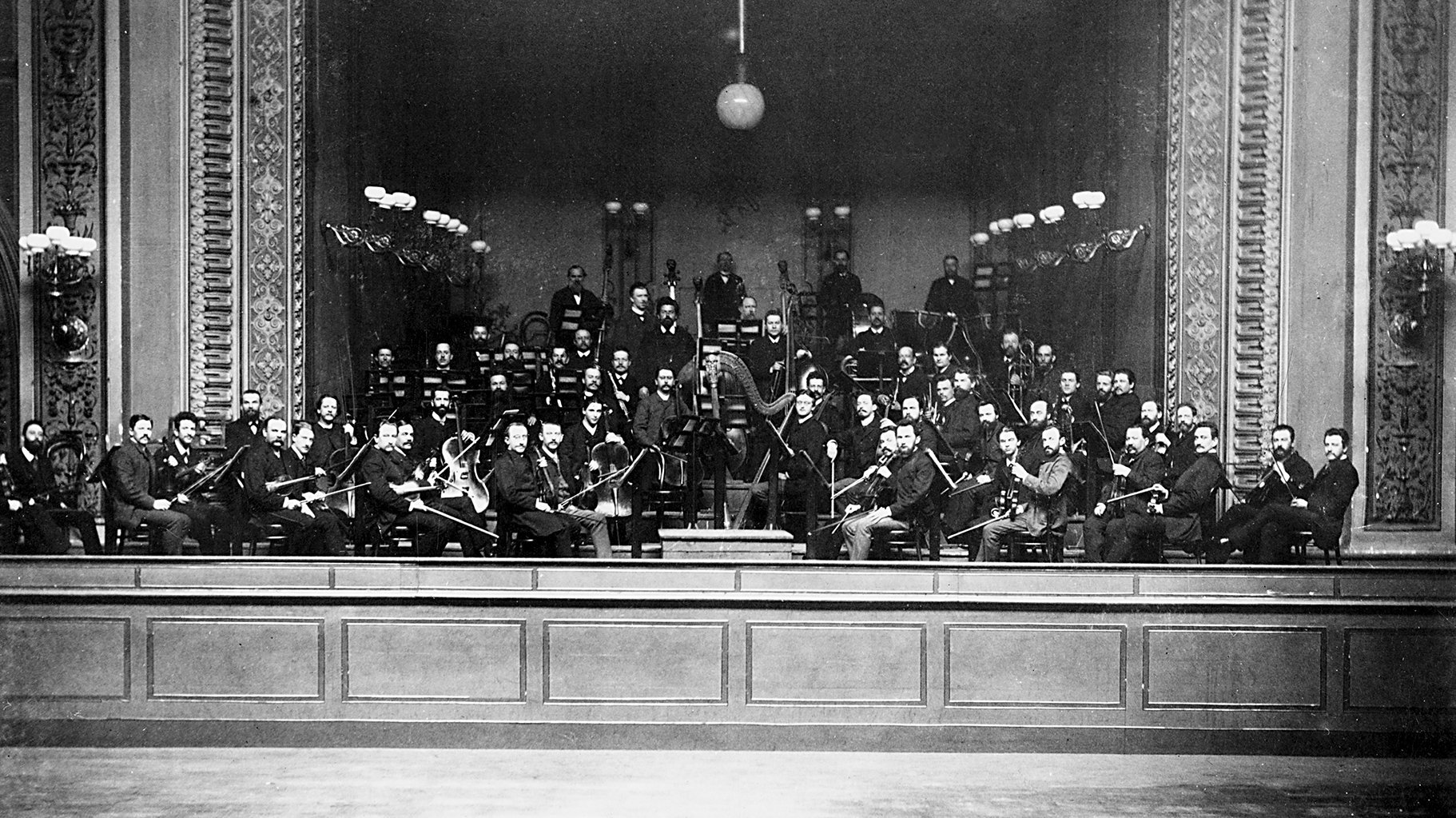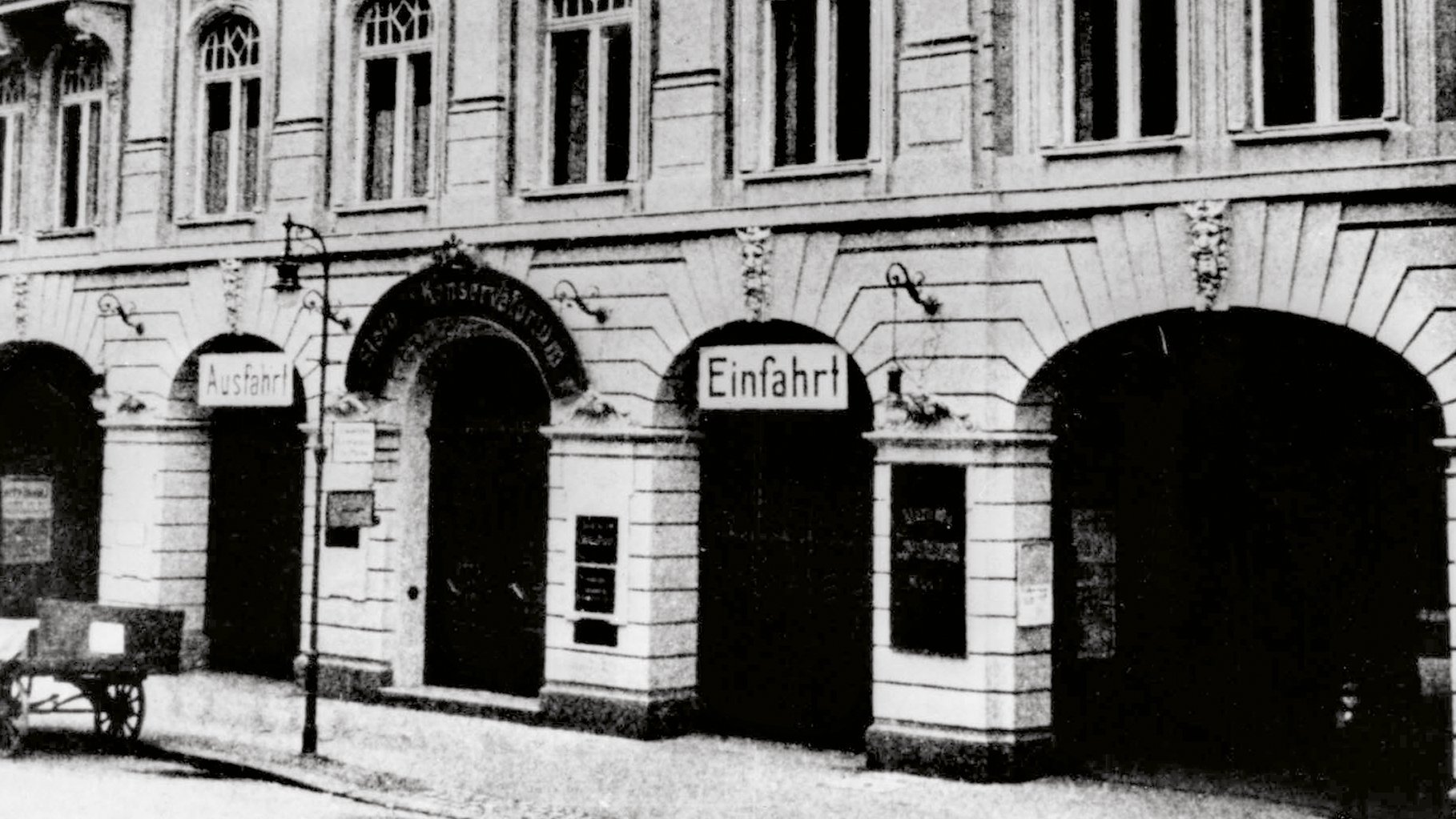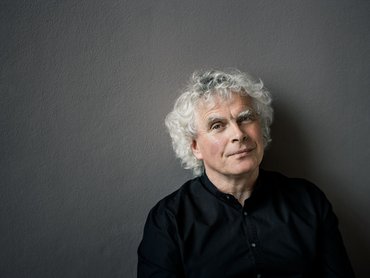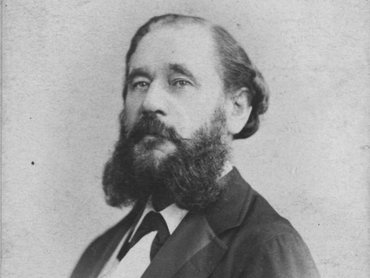- Orchestra History

Am Anfang stand ein Akt der Rebellion: Im März 1882 weigerten sich 50 Mitglieder der Kapelle des populären Musikdirektors Benjamin Bilse ihre neuen Kontrakte zu unterschreiben – zu schlecht erschienen ihnen die Konditionen: So sollten sie kaum mehr verdienen als Tagelöhner. Die Musiker beschlossen, sich selbständig zu machen und fortan auf eigenes Risiko zu arbeiten. Das neue Orchester nannte sich zunächst – mit Verweis auf seine Herkunft – »Ehemalige Bilsesche Kapelle« und verfolgte ähnliche Programmkonzepte wie sein früherer Arbeitgeber: In den sogenannten »Populären Konzerten« setzte es in der Regel mehr auf Unterhaltsames, während es in seinen »Sinfonie-Concerten« anspruchsvollere Werke und »Novitäten«, d.h. neue Stücke zeitgenössischer Komponisten, präsentierte.
It started with an act of rebellion: in March 1882 50 members of the ensemble run by the popular musical director Benjamin Bilse refused to sign their new contracts – they found the working conditions too unfavourable: they were to earn hardly more than day labourers. The musicians decided to set up on their own and from then on to work at their own risk. The new orchestra first called itself – referring to their origin – “The Former Bilse’s Ensemble” and they pursued programming concepts similar to those of their former employer: at so-called “Popular Concerts” they usually relied more on entertaining works, while presenting more challenging works and “novelties”, i.e. new pieces by contemporary composers, in their “Symphony Concerts”.
Musical rebels
Back then, Berlin was by no means a prominent European musical capital. Other cities, namely Leipzig and Vienna, set the tone. They had a highly sophisticated concert scene and thus correspondingly imposing concert halls. In contrast, the first performances of the “Philharmonisches Orchester” – as the ensemble was soon called – took place in an open-air restaurant. Starting in the summer of 1882, the orchestra played in the hall of a former roller skating rink in Bernburger Strasse with 2,000 seats. After renovations and improvements, this developed into Berlin’s most important concert hall: the “Philharmonie“.
Struggle for existence
The ambitious young orchestra had high aspirations. The Philharmonic musicians enjoyed their first major successes under conductors like Ludwig von Brenner, Ernst Rudorff and particularly Franz Wüllner. However, their independence harboured financial risks: to be sure, the musicians received administrative support from the start from the enterprising concert agent Hermann Wolff, who organised a subscription series for them and provided them with professional advice. But very soon after their founding the orchestra was buffeted by a difficult crisis that threatened their existence.
To secure their existence in the long term, they entered into a co-operation with the Royal Music Conservatory, run by the famous violinist Joseph Joachim. The members of the philharmonic orchestra committed to making themselves available to the Conservatory for a certain number of concerts. But Joseph Joachim and Hermann Wolff were personages with different musical worldviews. Rivalry and competition arose between the two of them. Hermann Wolff succeeded in more strongly expanding his influence on the orchestra and in winning over one of the most significant conductors of his time as the principal conductor of his subscription concerts: Hans von Bülow.


